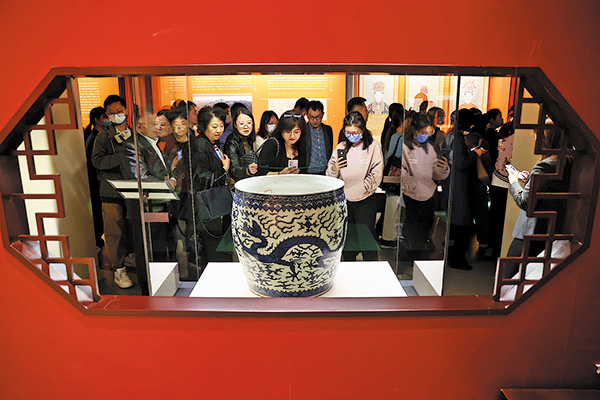

In 1573, Zhu Yijun sat on the throne, as a 10-year-old boy and the ruler of an empire that had fallen from its apex.
That started the story of the longest-reigning emperor of the Ming Dynasty (1368-1644), whose life was full of controversies and legends — political unrest, tense relations with high officials and loneliness as a result of his "tiger mother", which together made it difficult for him to handle state affairs.
However, his 48-year rule had another side: economic boom, reviving links overseas, military triumphs, quenching rebellions, and successful efforts in fighting invaders. Better known as Emperor Wanli, he created a complicated era and left room for reminiscence to argue and judge.
An ongoing exhibition in Beijing might inspire viewers to re-evaluate his entangled life.
Co-organized by the National Library of China, Art Exhibitions China and several other institutions, the four-month exhibition Encounter a Colorful Ming Dynasty in 1573: A Special Exhibition on Cultural Relics From Wanli Era opened to the public in late April at the National Museum of Classic Books, located in the southern venue of the national library. The 137 artifacts, on loan from the Administration of the Ming Tombs, the National Centre for Archaeology and Beijing Art Museum, include gold, silver and jade items, textiles and porcelain.
"The artifacts not only represent the high level of art and craftsmanship during that time, they also demonstrate the royal aura and social features," Feng Xue, a curator of the exhibition, says.